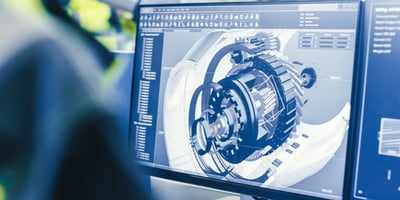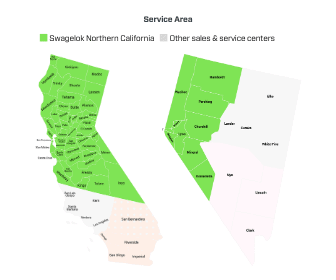It's Not Hard To Tame The Supply Pressure Effect
by Jeff Hopkins, on 5/8/19 8:45 AM
The right regulator can hold the line as pressure from a supply cylinder drops
"For many applications, especially high-flow applications, a common method for reducing Supply Pressure Effect is to switch to a regulator that has balanced poppet design."
- From Swagelok's Managing a Regulators Supply Pressure Effect (SPE), Part 1 (Video)
When you draw gas from a cylinder, you may notice a rise in the outlet pressure from a pressure-reducing regulator for no apparent reason. The most likely cause is the Supply Pressure Effect, sometimes called Dependency. It's an odd phenomenon, because the outlet pressure from the regulator rises as the inlet pressure from the cylinder falls. The reverse is also true: If the inlet pressure increases, the outlet pressure will decrease.
A peek inside
Here's what's going on.
One of the most common types of regulators is a spring loaded pressure reducing regulator. A spring controls the outlet pressure by applying downward force on a sensing element such as a diaphragm. The downward force from the sensing element opens a poppet to let more fluid through. When enough fluid is entering, the inlet pressure pushes up on the poppet. The regulator keeps the forces in balance at the pressure you set.
As the cylinder runs low on gas and the supply pressure falls, less force is pushing up on the poppet. With a decrease in force, the poppet moves away from the seat and increases the outlet pressure. The rise in outlet pressure is not strong enough to counterbalance the set spring force to push the diaphragm up and close the poppet at the same outlet pressure. It will close at a higher pressure.
If that's hard to picture in your mind, take a look at the short video embedded below from Swagelok. It shows the Supply Pressure Effect in action.
Manufacturers typically provide an SPE chart showing the effect at various flow coefficients, expressed as a percentage or as a ratio. For instance, let's say the pressure in the cylinder drops from 2500 psig to 500 psig. If the regulator has an SPE of 1 percent, that means the outlet pressure will rise by 20 psig.
What to do about it
SPE will be more pronounced in a model of regulator with a plain poppet, called an unbalanced poppet. For many applications, especially high-flow applications, a common method for reducing SPE is to switch to a regulator that has balanced poppet design. The design is intended to allow the inlet and outlet pressures to control the poppet more evenly.
It's done by an O-ring around the lower stem of the poppet, and an orifice inside the stem that runs from top to bottom. In an SPE scenario, the falling pressure from the supply cylinder has less effect on the poppet because it is acting on a smaller area. The outlet pressure has sufficient leverage to close the poppet and restrict pressure going downstream.
The Swagelok video demonstrates this effect as well.
So where an unbalanced poppet design may have an SPE of 1 percent to 3 percent, a balanced poppet design in the same conditions might have an SPE of only 0.2 percent to 1 percent.
That's not the only way to deal with the SPE problem, however. Keep an eye on our blog, and we'll be back with more about the Supply Pressure Effect.
More like this:



/Digital%20montage%20(1).jpg?width=1920&name=Digital%20montage%20(1).jpg)


